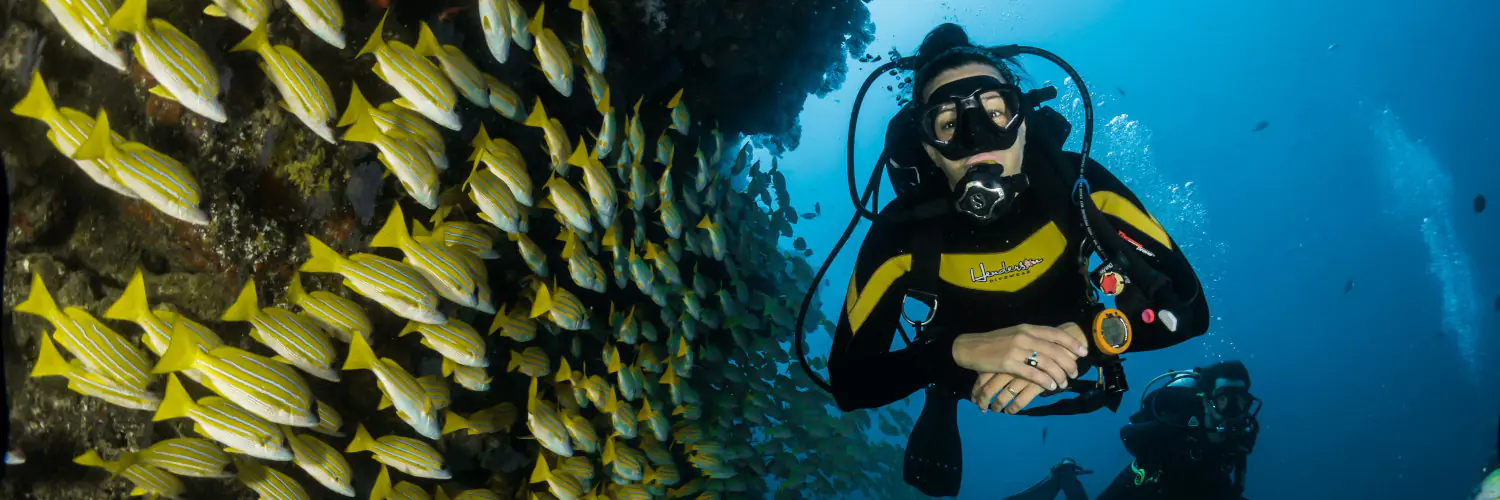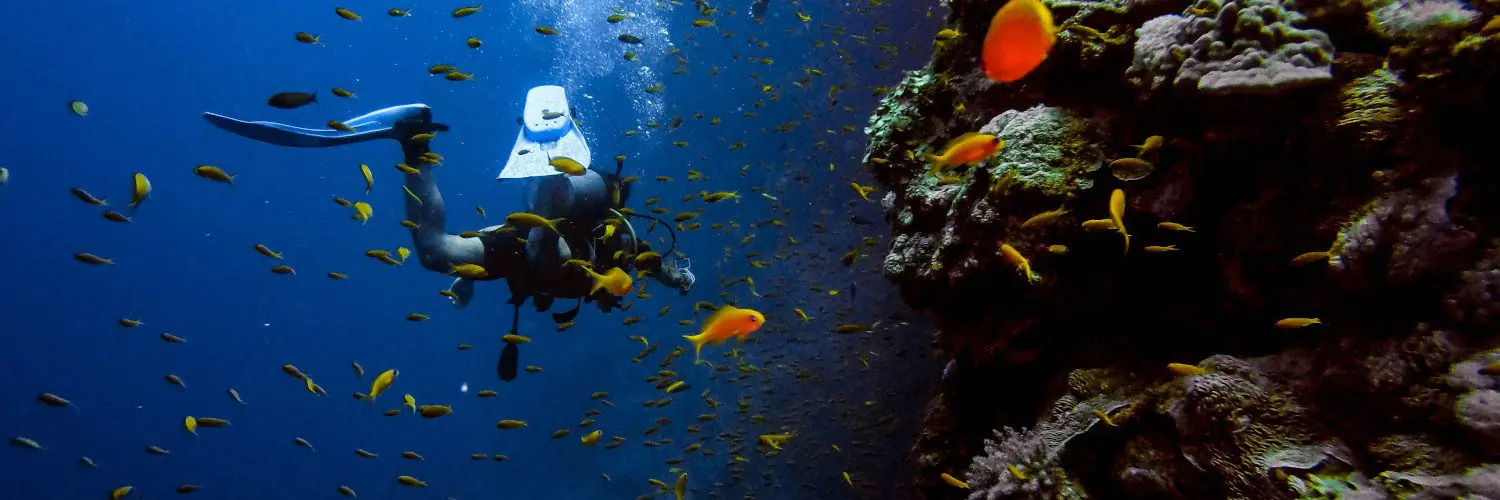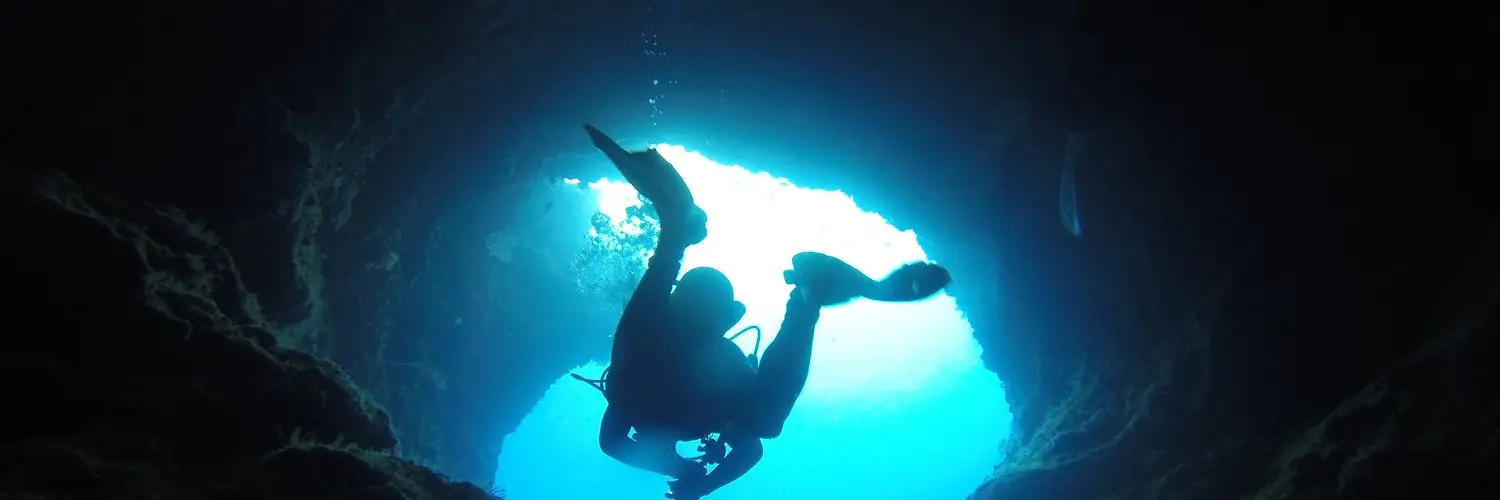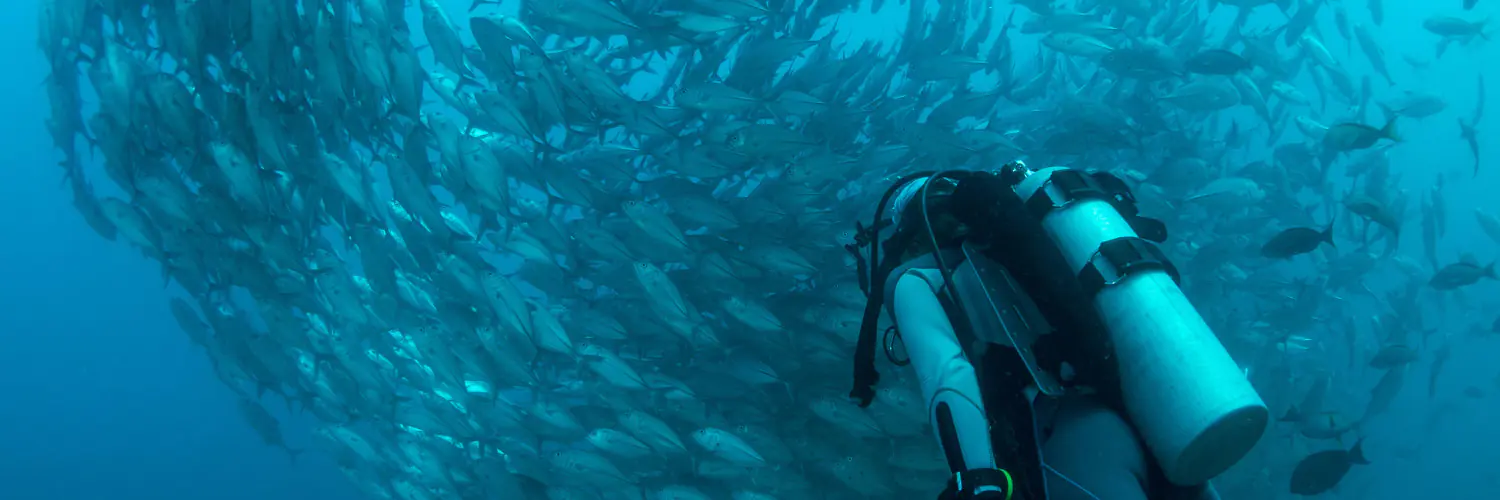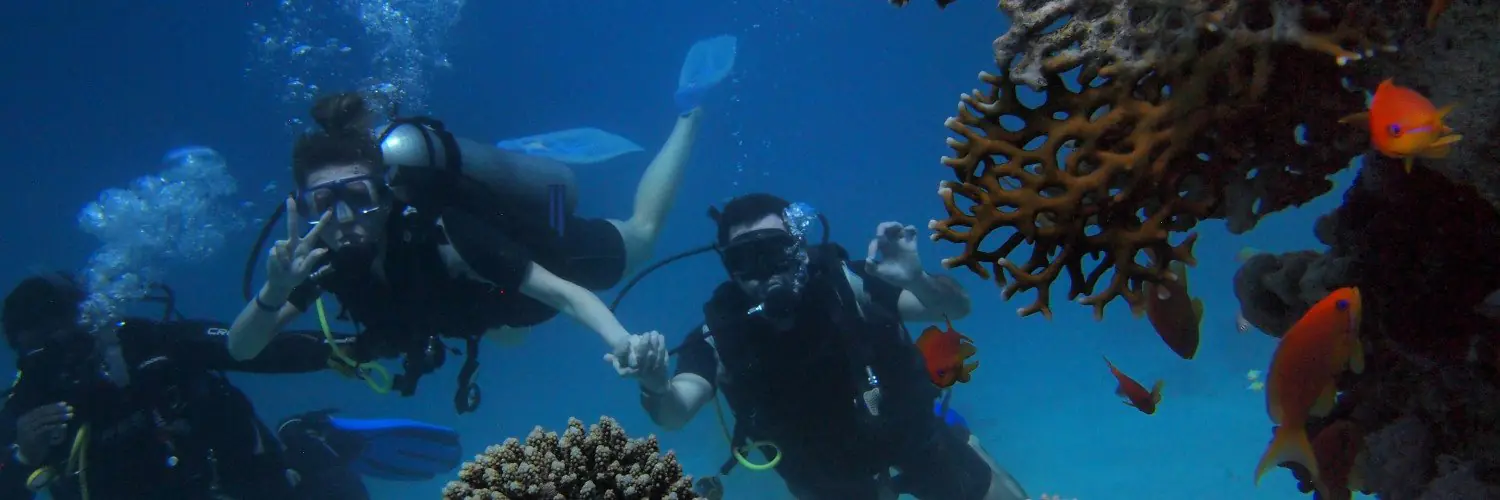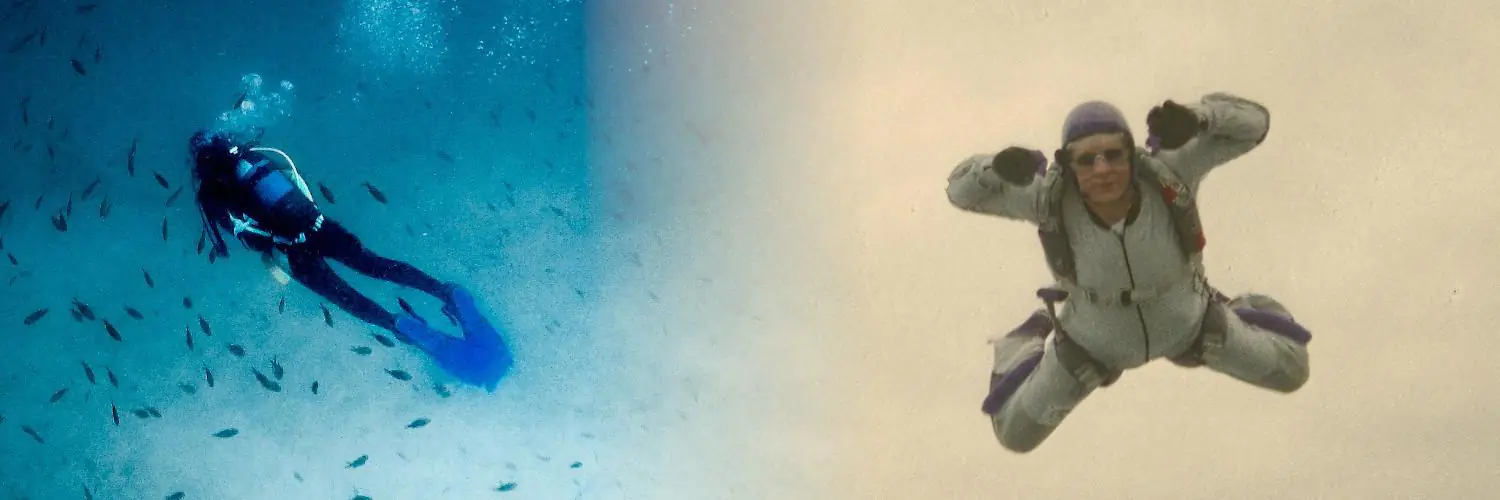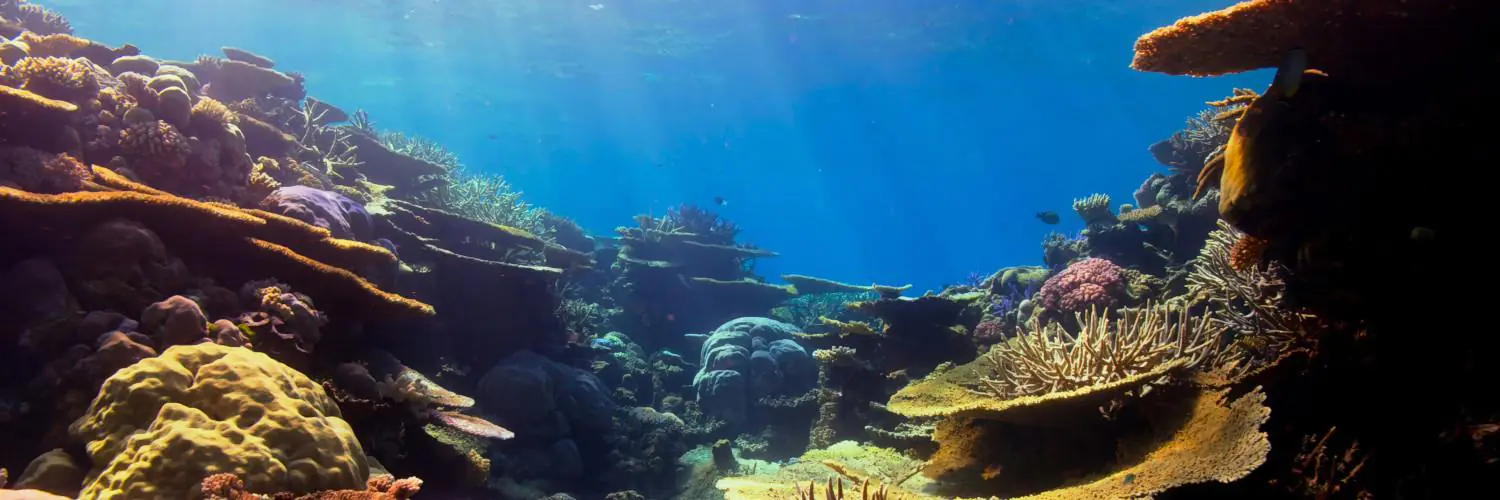Scuba diving offers an extraordinary window into the aquatic world. It demands a unique set of skills, not least of which is the ability to breathe effectively underwater. The way divers breathe through a regulator is distinct from breathing on land. Mastering breathing techniques is crucial as it impacts not only air consumption but also buoyancy control and overall underwater experience. Developing good breathing habits helps to conserve air, extend dive times, and enhance the enjoyment of exploring underwater environments.
Breathing exercises are key to improving a scuba diver’s control over their breath. They can enhance lung capacity and the efficiency of airway control, facilitating a calm and relaxed state necessary for a successful dive. Techniques often include ‘belly breathing’ or diaphragmatic breathing, where breaths are drawn deep into the abdomen to promote full oxygen exchange and to maintain neutral buoyancy. By integrating exercises derived from disciplines such as yoga, divers can learn to reduce anxiety and increase their mental focus, thereby improving their breathing rhythm and overall diving technique.
With consistent practice, divers can achieve a level of proficiency that makes every breath underwater natural and efficient. This not only makes for a safer diving experience but also allows divers to fully immerse in the serene beauty of the marine life around them without the distraction of improper breathing techniques. Therefore, investing time in mastering breathing exercises pays significant dividends in the quality and safety of a diver’s underwater adventures.
Table of Contents
Understanding the Basics of Breathing Techniques
Mastering effective breathing techniques is crucial for optimizing air consumption and ensuring safety in scuba diving.
The Role of the Diaphragm in Scuba Breathing
The diaphragm plays a pivotal role in regulating breathing underwater. As the primary muscle involved in the process, its proper functioning is essential for maintaining an efficient and controlled breathing pattern. In scuba diving, the diaphragm contracts and flattens, allowing the lungs to expand and fill with air. Conversely, when the diaphragm relaxes, it reduces the space in the chest cavity and enables the expulsion of air. Mastery of diaphragmatic breathing, also known as belly breathing, promotes better air management by maximizing lung capacity and reducing unnecessary energy expenditure.
The Importance of Deep Breathing Underwater
Deep, deliberate respiratory actions are fundamental for optimizing oxygen intake and controlling buoyancy. The technique of deep abdominal breathing encourages divers to inhale slowly through the nose, allowing the abdomen to expand fully, thus engaging the diaphragm effectively. This method maximizes oxygen absorption and helps in the efficient release of CO2, which is crucial for preventing the rapid depletion of air supply. Additionally, it assists in maintaining neutral buoyancy, a key aspect of proficient diving.
Common Misconceptions About Scuba Breathing
There are several misconceptions about breathing while scuba diving. One commonly misunderstood notion is that breathing through the mouth can lead to quicker air consumption. However, whether you breathe through your nose or mouth underwater, wearing a mask and regulator, it’s the breath control and technique that have a significant impact on air usage, not the specific airway. Another misconception is that fast, shallow chest breathing is suitable for conserving air. In reality, rapid, shallow breaths using only the chest and intercostal muscles can result in inefficient oxygen exchange and a buildup of CO2, potentially causing discomfort and an increased urge to breathe. It is, therefore, essential to use breathing techniques that involve slow, deep, and controlled breaths to conserve air and prolong underwater excursions.
Essentials of Scuba Diving Breathing
Scuba diving requires mastery of breathing techniques to ensure efficient air consumption and effective buoyancy control. Below are fundamental aspects of breathing critical to a diver’s underwater experience.
Mastering Buoyancy Through Breath Control
In scuba diving, buoyancy control is highly dependent on proper breath management. Controlling buoyancy through breath involves inhaling deeply to ascend slightly and exhaling completely to descend. This requires divers to be mindful of each breath:
- Inhalation: Increases lung volume and buoyancy, sometimes leading to a gentle ascent.
- Exhalation: Decreases lung volume, reducing buoyancy, allowing for descent.
Achieving neutral buoyancy helps preserve marine life, prevent accidents, and enhance enjoyment by enabling a diver to float effortlessly in the water column.
Regulating Air Consumption
To maximize dive time, scuba divers must regulate their air consumption. Reduced air consumption is associated with calm, deep, and rhythmic breathing, similar to yoga breathing techniques:
- Breathing Slowly: Conserves air by decreasing the work of breathing and the rate at which the tank is depleted.
- Full Breaths: Ensure complete gas exchange, optimizing lung function and reducing the frequency of breaths needed.
Divers can practice breath control on land to improve their underwater air consumption rates.
Breathing Patterns for Optimal Dive Time
Adopting the best breathing pattern is crucial for extending underwater exploration times. Divers should focus on:
- Rhythmic Breathing: A steady pattern of inhaling and exhaling smoothly through the regulator.
- Avoiding Holding Breath: Maintaining a continuous breathing cycle is imperative to prevent lung overexpansion injuries.
By developing an efficient breathing pattern, divers can enhance their air consumption rates and lung capacity, subsequently enjoying longer dive times with minimized stress on the body.
Breathing Exercises for Scuba Divers
Effective breathing techniques enhance a scuba diver’s underwater experience by promoting better air consumption, relaxation, and overall mental health. Scuba divers are encouraged to exercise breathing methods that improve diaphragmatic function, lung capacity, and bring harmonious alignment through practices like yoga. These exercises also contribute to energy management and help mitigate fatigue during dives.
Practicing Diaphragmatic Breathing
Diaphragmatic breathing is a foundational exercise for scuba divers. It involves breathing deep into the belly which maximizes air intake and helps maintain a calm, controlled breathing rhythm. Divers can practice this on land by:
- Lying down and placing one hand on the chest and the other on the abdomen.
- Inhaling slowly for a count of two, ensuring that the hand on the abdomen rises more than the one on the chest.
- Exhaling gently and feeling the abdomen lower.
Yoga and Scuba Diving: Breathing Harmony
Yoga integrates controlled breathing with movement, teaching divers the importance of breath-work in maintaining mental and physical equilibrium. Specific yoga breathing exercises, or pranayama, prepare divers for the underwater environment by focusing on:
- Ujjayi breath, characterized by a slight constriction of the throat, helps one be conscious of their breathing sound and pattern.
- Nadi Shodhana, or alternate nostril breathing, which promotes relaxation and mental clarity before a dive.
Exercises to Increase Lung Capacity
Enhanced lung capacity allows divers to use their air supply more efficiently. Exercises tailored for this include:
- Aerobic activities like swimming or jogging, which should be performed regularly.
- Interval training, which involves short bursts of high-intensity exercise followed by rest, can incrementally increase lung performance.
Incorporating these exercises into a regular fitness regimen can lead to noticeable improvements in endurance and breathing efficiency during scuba diving.
Equipment and Techniques
A diver’s breathing efficacy is closely linked to the functionality of their equipment. Understanding how each piece works in harmony with proper techniques is crucial for a safe and enjoyable dive.
The Role of the Regulator in Breathing
The regulator is a pivotal piece of equipment that allows divers to breathe from the compressed air tank. It converts the high-pressure air to ambient pressure suitable for human lungs. A diver must breathe slowly and deeply through the regulator, maintaining a steady rhythm to conserve air and manage buoyancy.
- Breathing Slowly: It prevents unnecessary strain on the lungs and conserves air.
- Deep Breaths: They are essential to ensure efficient gas exchange in the lungs.
Understanding the Mouthpiece and Breathing
The mouthpiece of a regulator must be comfortably sealed in the diver’s mouth, which ensures that no water enters and breathing can remain unobstructed. It is imperative that the mouthpiece fit well to avoid fatigue in the jaw muscles. Ensuring a good fit minimizes distractions allowing the diver to focus on proper breathing technique.
The Connection Between Equipment and Breathing Technique
The interplay between equipment and a diver’s breathing technique is taught during an open water course. The course highlights the importance of practicing with the actual equipment in controlled conditions before attempting an open-water dive. Proper breathing technique, in concert with well-maintained and correctly used equipment, leads to improved air consumption and buoyancy control.
- Consistency in Training: Divers learn and reinforce these skills to become second nature.
- Equipment Familiarity: It increases comfort and confidence in open water environments.
Psychological Aspects of Scuba Breathing
Scuba breathing exercises have a profound impact on psychological well-being, directly affecting a diver’s ability to manage anxiety and maintain mental focus while conserving energy underwater.
Managing Anxiety Through Breathing
Scuba divers often encounter anxiety, which can stem from diving in an unfamiliar environment or challenges inherent in underwater explorations. Utilizing specific breathing techniques, divers can enhance relaxation and reduce anxiety levels. The key is to focus on slow, rhythmic breathing—inhaling deeply through the regulator, holding for a moment, and then steadily exhaling. This controlled pattern helps maintain a calm state of mind, balancing the body’s physiological responses to stress.
- Inhale deeply and slowly over 4-6 seconds.
- Hold gently for 2-3 seconds.
- Exhale gradually over 4-6 seconds.
Breathing for Mental Focus and Energy Conservation
Breathing techniques also play a critical role in optimizing mental focus and conserving energy. By mediating their breathing pattern, scuba divers can enhance their attention and concentrate on underwater tasks, navigation, and safety procedures. Slow and controlled breathing underwater ensures a steady supply of oxygen to the brain, facilitating clear thinking. It also promotes energy efficiency by preventing rapid depletion of air reserves from the tank, allowing for longer, more enjoyable dives.
- Focus: Use diaphragmatic breathing to increase oxygen flow and maintain awareness.
- Energy Conservation: Prevent overexertion by pacing your breaths to minimize unnecessary movement and air consumption.

